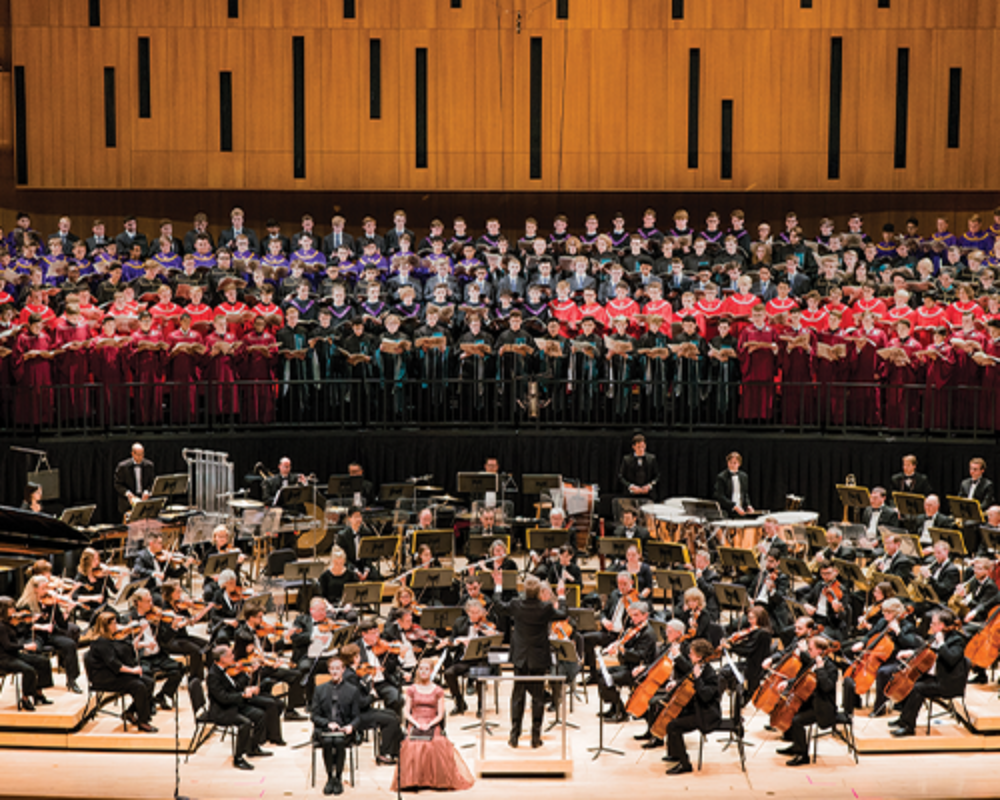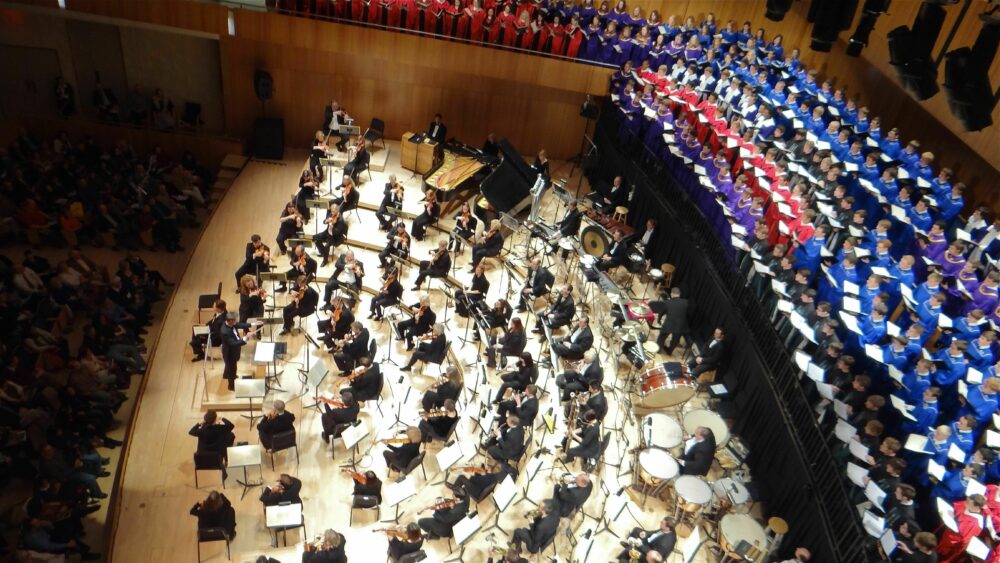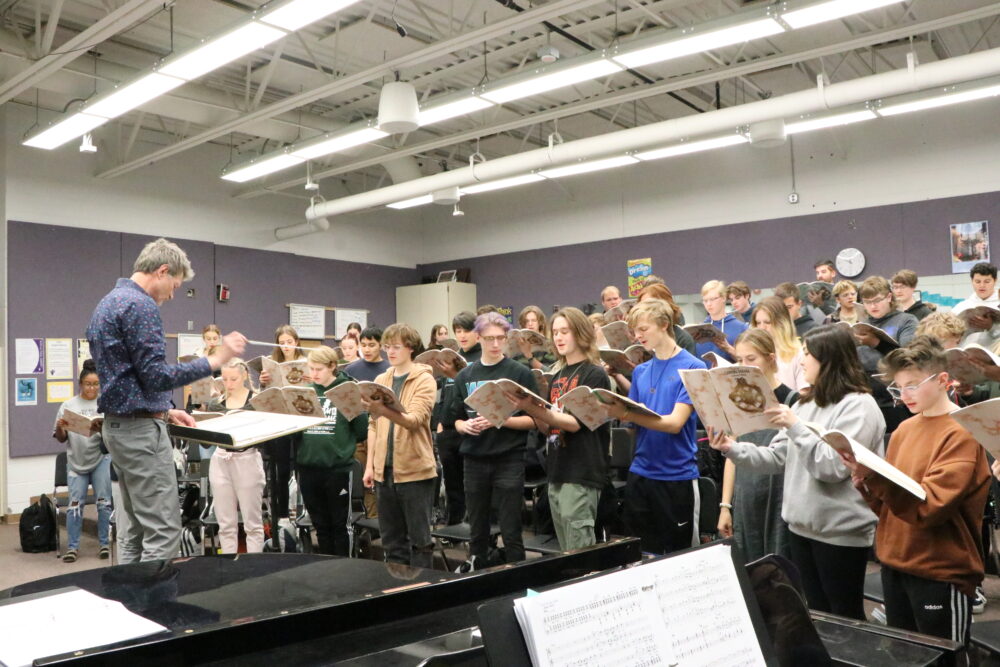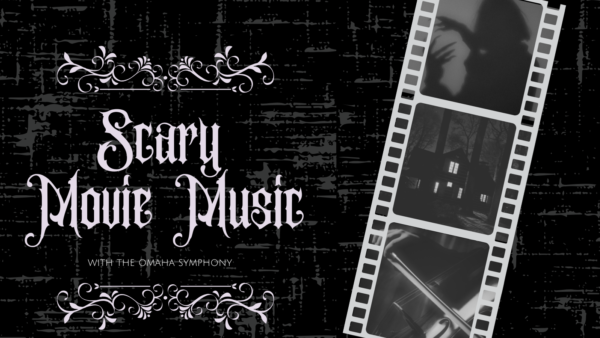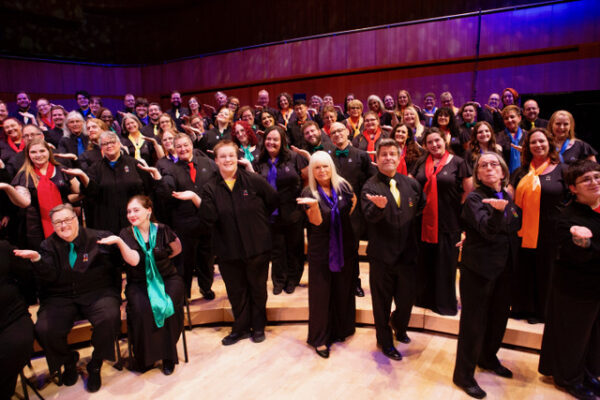Carmina Burana, based on a series of 200 secular poems written in the 13th century, is one of the most celebrated compositions of the 20th century, featured frequently in films, television, and concert halls. Collected and published in 1847, the poems were set to music in 1937 by Carl Orff, who once told his publisher, “Everything I have written to date, and which you have, unfortunately printed, should be destroyed. With Carmina Burana, my collected works begin.”
Orff might have been right in assuming that this work will be monumental. By utilizing bold rhythmic drumming, tonal harmonies, and memorable melodies, Orff creates an auditory landscape that is emotionally impactful for all who hear it.
This is especially evident in the powerful first movement. The chorus’ invocation of “O Fortuna” to Fortune, Empress of the World, is built on a repeated rhythm that intensifies to a stunning climax and is used as a towering pillar to frame the introduction and conclusion of the work. Three broad groups make up the rest of the movements: “Spring” and “On the Green,” “In the Tavern,” and “The Court of Love.” “Spring” features brightness and optimism signaling the return of the Spring season while “In the Tavern” features a celebratory yet rowdy atmosphere. “The Court of Love” explores various states of love and “O Fortuna” returns as the driving finale, as the wheel of fate has turned again.
Evidently, even though our world has changed since the 13th century, our sentiments remain unchanged. We still look forward to the return of spring after the winter, we contemplate love in all its different forms, and we set our sights on fate in times of happiness and sorrow.

